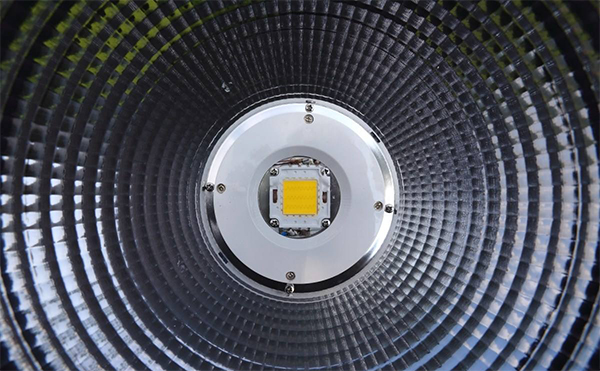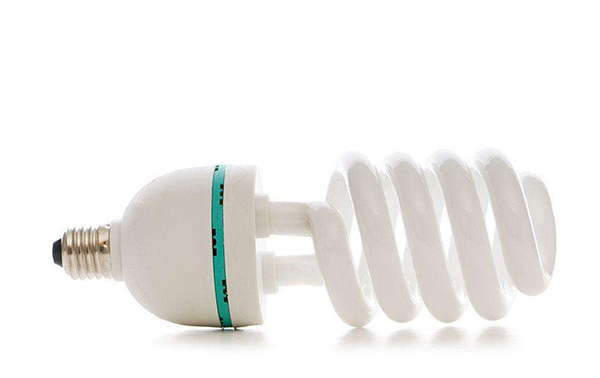First, led lights LED light, light-emitting diode is referred to as LED for short. Diodes made of compounds containing gallium (Ga), arsenic (As), phosphorus (P), nitrogen (N), etc., can radiate visible light when electrons and holes are recombined, so they can be used to make light-emitting diodes. Used as indicators in circuits and instruments, or composed of text or digital displays. The gallium arsenide diode emits red light, the gallium phosphide diode emits green light, the silicon carbide diode emits yellow light, and the gallium nitride diode emits blue light. Due to chemical properties, it is divided into organic light-emitting diode OLED and inorganic light-emitting diode LED.
What are the advantages of LED lights: 1. Energy saving, the energy consumption of white LED is only 1/10 of incandescent lamp, and 1/4 of energy saving lamp;
2. Long life, the life can reach more than 100,000 hours, it can be described as "once and forever" for ordinary home lighting;
3. Can work at high speed. If the energy saving lamp is turned on or off frequently, it will turn black quickly and break down;
What are the disadvantages of LED lights: High starting cost, poor color rendering, low efficiency of high-power LED, constant current drive (requires special drive circuit). In contrast, various traditional lightings have certain drawbacks.
Second, energy-saving lamps Energy-saving lamps, also known as energy-saving light bulbs, electronic light bulbs, compact fluorescent lamps and integrated fluorescent lamps, refer to the combination of fluorescent lamps and ballasts (ballasts) into an integrated lighting device. In 2008, the state started the "green lighting" project, and urban and rural residents and enterprises enjoyed a certain percentage of subsidies for the use of energy-saving lamps of successful bidders. The promotion of energy-saving lamps is of great significance. However, the environmental hazards of waste energy-saving lamps have also caused concern. By the end of October 2012, hundreds of millions of energy-saving lamps had been scrapped for energy-saving promotion projects, each of which could pollute 180 tons of water and soil. The disposal and recycling of waste energy-saving lamps caused concern. Nevertheless, the demand for energy-saving lamps is still growing, especially in the coming year of 2014, the demand is still increasing.
What are the advantages of energy-saving lamps: 1. Compact structure and small size.
2. high luminous efficiency of 60Lm / w, more than 80% power saving, saving energy.
3. can directly replace incandescent bulbs.
4. Long life, 6-10 times of incandescent lamp.
5. The inner wall of the tube is coated with a protective film and a triple spiral filament can greatly extend the service life.
What are the disadvantages of energy-saving lamps: 1. There is mercury pollution during the production process and after use and abandonment. At present, western countries attach great importance to mercury pollution. Chinese people are increasingly aware of the dangers of mercury pollution
2. because it is a glass product, it is fragile, difficult to transport, and difficult to install
3. its power consumption is still too large
4. easy to damage, short life, energy saving without saving money is its best portrayal.
What is the difference between led lights and energy saving lamps Energy-saving lamps are short for CFL (Compact Fluorescent Lamp), which is mainly energy-saving compared with the original incandescent bulbs.
LED bulbs refer to bulbs that use LEDs as a light source. They also have high luminous efficiency. They are the new light bulbs currently, and they have the tendency to replace CFLs. In recent years, some LED lights have also been basically displayed.
Currently, the light efficiency of the two is slightly lower than that of the CFL, and the CFL generally has a light efficiency of 50-65lm / W. The light efficiency of the LED itself is very high, most of which are currently between 100-130lm / W, but due to problems such as the light emitting angle of the LED, the light efficiency of the entire lamp is about 65-80lm / W, and the difference between the two is not too large However, the price of CFL and LED with the same luminous flux is generally about 2-4 times, the power is small, the price is small, the power is large, and the power is large. The life between the two is slightly higher than that of LEDs compared to energy-saving lamps. The nominal life is 6000-12000h, and the nominal life of LED is 10000-20000h. These comparisons are only for comparison of some exports to the European Union or North America. Due to the uneven quality of domestic sales, detailed assessments cannot be made. However, the life expectancy is generally about the order of these regions (including the so-called international brands philips, osram, etc.).
For the problem of vision damage, incandescent light bulbs are better than CFL, and CFL is better than LED. In particular, most of the LED domestic lamps currently sold domestically do not pay attention to the impact of LED on vision, and deliberately reduce the loss of light efficiency between the LED light source and the entire light, so that the entire light has a higher light efficiency. Data such as luminous flux uses a single-stage PFC circuit (which has a high ripple and easily makes eyes tired) to meet China's first-class standards for lamps and low-end price requirements.
Are led lights more energy efficient than energy saving lights? First of all, it must be emphasized that LED light bulbs save more power than energy-saving lamps. This is what most people know, or have heard of, but many people still have doubts about this. After all, they have not calculated where this electricity is saved from.
Due to the different light-emitting principles of energy-saving lamps and LEDs, their luminous efficiency is different. The luminous efficiency of halogen-based energy-saving lamps is only 30-40lm / W. The luminous efficiency of three-primary-color energy-saving lamps is higher than that of halogen-based energy-saving lamps, about 40. -60lm / W (different brand products, different quality, different luminous efficiency, Philips energy-saving lighting efficiency is about 60lm / W). However, the luminous efficiency of LED is much higher than that of energy-saving lamps, and the current technology level has generally reached 90-100lm / W. So in essence, the brightness produced by a 1W LED requires at least about 2W of energy-saving lamps to achieve similar brightness. However, the actual perceived brightness is also affected by many factors. The most direct factor affecting temperature is temperature. Light decay, the energy-saving lamp will produce a bright heat, while LED is a cold light source, the heat generated is much less than the energy-saving lamp, so the LED light decay is smaller than the energy-saving lamp;
There are still many buyers. Users know that LED saves electricity compared to energy-saving lamps, but they feel that the price of LEDs is more expensive than energy-saving lamps. The savings in electricity costs are not enough to make up for the extra money spent on buying lamps, so they decide to continue to buy relatively cheaply. Use of energy-saving lamps. Through data analysis, the amount of extra electricity costs in the process of using energy-saving lamps far exceeds the amount saved when purchasing energy-saving lamps. Therefore, it is recommended that you use LED lamps as much as possible, especially corporate users who use a large amount, but it is best to choose first-line brands, such as Pengke Lighting, products produced by powerful manufacturers.

